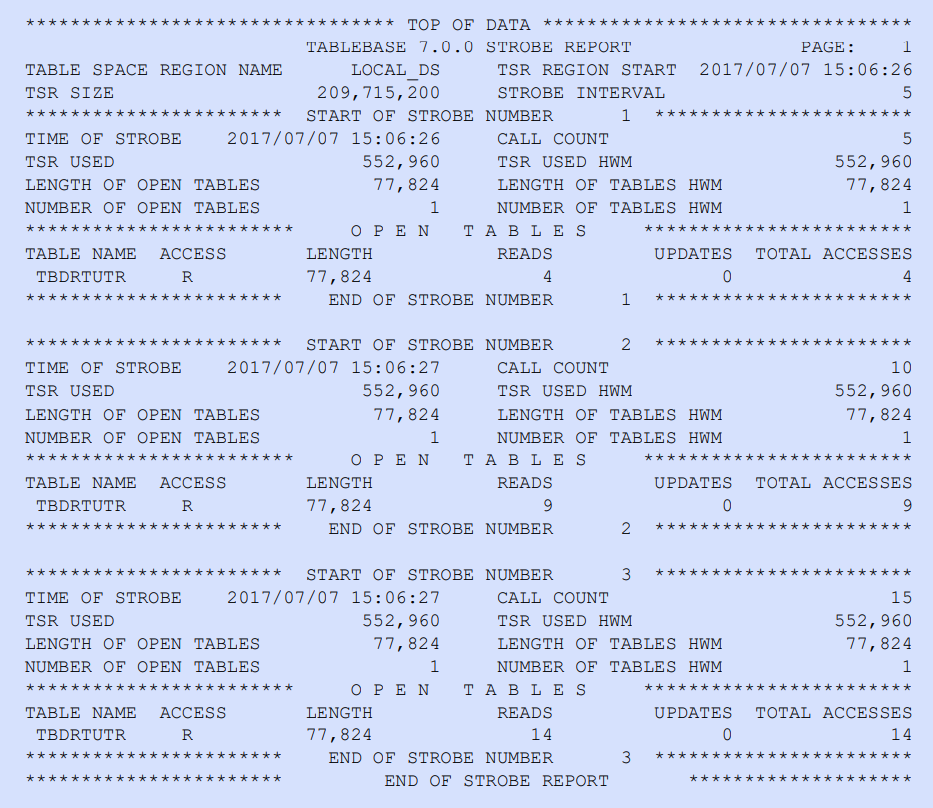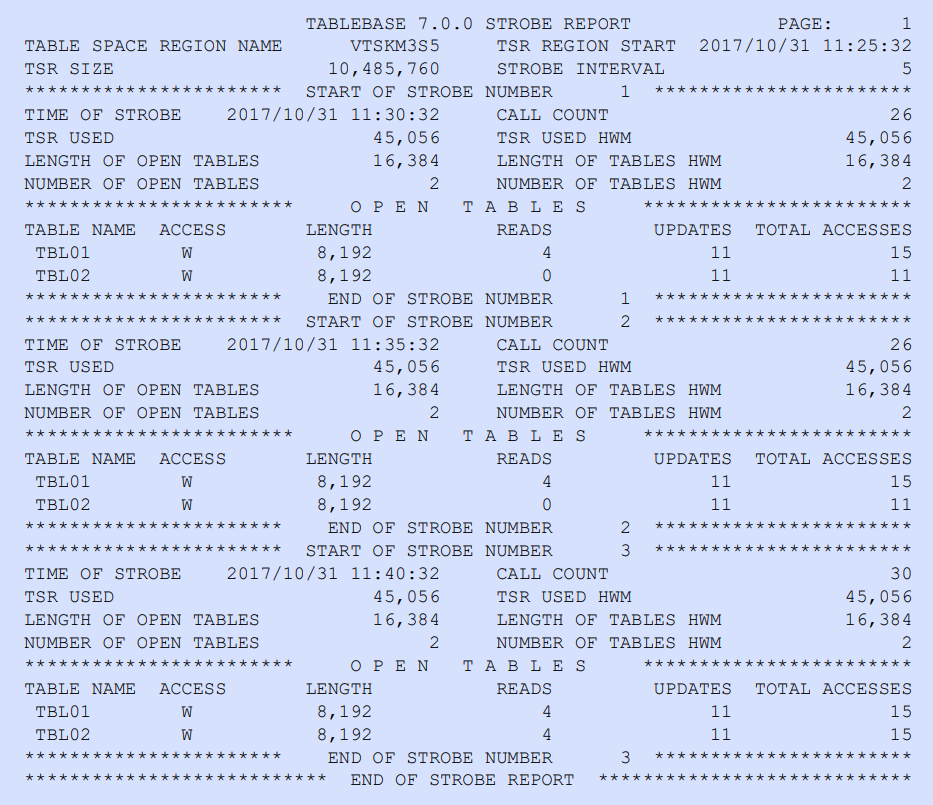Figure 22 is a sample of a tableSPACE report for a local TSR. The report can be generated for any number of strobe cycles; this example shows three strobe cycles with STROBE set to 5). Note that each strobe shows the CALL COUNT value incremented by 5.
The report has a header and then fields that detail each strobe cycle. The information for each strobe cycle has the same format. The last section of the report provides details on each table that is open at the end of the strobe interval, its usage, and status in the TSR.

Figure 23 is a sample of a tableSPACE report in minute intervals for a VTS-TSR using STROBEMETHOD=3. This example shows three strobe cycles with STROBE set to 5. Note that each strobe shows the TIME OF STROBE value incremented by 5 minutes.
The rest of the report is similar to that for a local TSR. Table 16 describes each field of the report.

|
Section |
Field name |
Contains |
|---|---|---|
|
Header information |
tableSPACE Region name |
LOCAL_DS if strobe is for a local TSR. VTS-TSR name if the strobe is for a VTS-TSR |
|
TSR Region start |
The date and time that the TSR Region started |
|
|
TSR size |
The size in bytes of the TSR |
|
|
Strobe interval |
The strobe interval for the region |
|
|
Start of strobe |
Strobe number |
The strobe number for which the following information is being written |
|
Time of strobe |
The date and time at which the statistics were captured for this strobe |
|
|
Call count |
The total number of tableBASE calls that have been made at the end of this strobe interval. Only calls that reference the TSR are counted (calls such as BN, LS, ML, CS, and LL are not counted). The call count can accomodate up to 13 digits (maximum value of 9999,999,999,999). |
|
|
TSR used |
The amount of TSR that is in use at the end of the strobe interval |
|
|
TSR used HWM |
The high water mark is the maximum amount of tableSPACE used up to now |
|
|
Length of open tables |
The total size of all open tables in the TSR at the end of the strobe interval. The length field can accomodate up to 11 digits (maximum value of 99,999,999,999). |
|
|
Length of tables HWM |
The highwater mark is the maximum size of all open tables in the TSR at any time since the region has been active. The length field can accomodate up to 11 digits (maximum value of 99,999,999,999). |
|
|
Number of open tables |
The total number of all open tables in the TSR at the end of the strobe interval (note that this value may not match the number of tables listed, due to the use of sub-tasking in performance data collection) |
|
|
Number of tables HWM |
The highwater mark is the maximum number of all open tables in the TSR at any time since the region has been active |
|
|
Open tables |
Table name |
The name of the table occupying that position in the TSR. |
|
Access |
R for read or W for write |
|
|
Length |
The number of bytes in the table. The length field can accomodate up to 11 digits (maximum value of 99,999,999,999). |
|
|
Reads |
The number of reads in this TSR. The number of reads can be up to 13 digits (maximum value of 9999,999,999,999). |
|
|
Updates |
The number of inserts, deletes, or replaces in this TSR. The number of updates can be up to 13 digits (maximum value of 9999,999,999,999). |
|
|
Total accesses |
The sum of Reads and Updates. The total accesses can be up to 13 digits (maximum value of 9999,999,999,999). |
For further information on the use of the tableSPACE Report and the STROBE parameter, see the tableBASE Programming Guide.